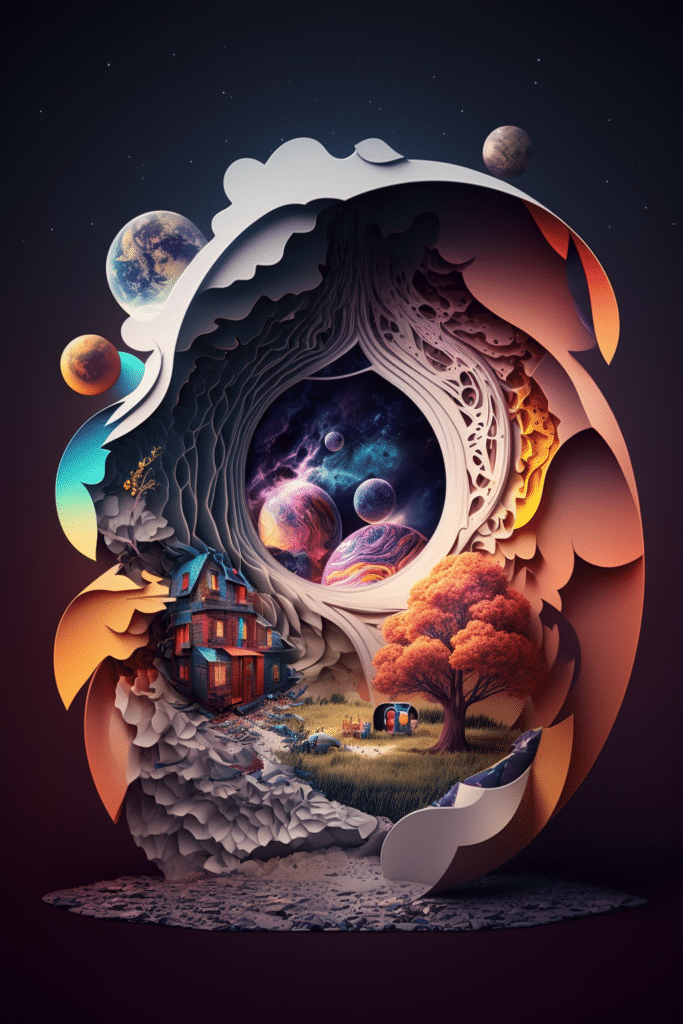Abstract art is a fascinating realm where traditional rules are challenged, boundaries are expanded, and the representation of reality is reimagined. It is a domain where artists convey their innermost feelings, thoughts, and emotions not through literal depiction, but through the use of colors, shapes, and textures. Among the most intriguing aspects of abstract art is the significant role of emotion and perception in both the creation and interpretation of the work.
The role of emotion in abstract art is twofold. Firstly, it serves as an essential source of inspiration for the artist. Emotion is the driving force behind the creation of abstract art, propelling the artist to express what is felt rather than what is seen. Unlike representational art, which seeks to depict a recognizable subject, abstract art is often a raw, unfiltered outpouring of the artist’s emotional state. The artist’s feelings, moods, and internal conflicts can dramatically influence the choice of colors, the manipulation of form, and the application of texture.
Pioneers of abstract art such as Wassily Kandinsky and Mark Rothko placed great emphasis on the emotional content of their work. Kandinsky, often cited as the father of abstract art, famously asserted that “color is a power which directly influences the soul.” He used color to evoke emotion and provoke a sensory response in the viewer. Similarly, Rothko’s large, color-drenched canvases were intended to stir deep emotional responses, with the artist himself stating that he was “interested only in expressing basic human emotions — tragedy, ecstasy, doom.”
The second role of emotion lies in the viewer’s interpretation of the artwork. Abstract art, with its lack of a defined, recognizable subject, invites viewers to experience art on a deeply personal level. It allows for a direct interaction between the artwork and the viewer’s emotions. The colors, shapes, and composition can evoke different feelings in each viewer, and the interpretation can be unique to their personal experiences and emotional state at that moment.
Perception, on the other hand, plays a critical role in the way abstract art is interpreted. Abstract art challenges our perception, asking us to see beyond the tangible and the concrete. Since abstract art does not conform to realistic representations, it demands that we perceive and understand it in a different way. It encourages viewers to use their imagination and intuition to derive meaning from the artwork.
 The psychological concept of pareidolia, where the mind responds to a stimulus by perceiving familiar patterns where none exist, can often come into play. Viewers may identify shapes or themes in the artwork, influenced by their personal experiences, memories, or cultural background. These perceived patterns add a new layer of understanding to the artwork, making the experience of viewing abstract art a dynamic and interactive process.
The psychological concept of pareidolia, where the mind responds to a stimulus by perceiving familiar patterns where none exist, can often come into play. Viewers may identify shapes or themes in the artwork, influenced by their personal experiences, memories, or cultural background. These perceived patterns add a new layer of understanding to the artwork, making the experience of viewing abstract art a dynamic and interactive process.
Moreover, abstract art has the unique ability to reflect the complexity of human perception. It can represent the multi-sensory, layered, and sometimes chaotic nature of our perception of the world. In doing so, it allows for a more nuanced exploration of reality that goes beyond what is immediately visible.
Abstract art also serves as a vehicle for exploring the subjective nature of perception. Each viewer brings their unique perspectives, biases, and experiences to the interpretation of the artwork. Therefore, an abstract piece can elicit a multitude of interpretations, each as valid as the next, highlighting the individual nature of perception.
In conclusion, emotion and perception play a vital role in the realm of abstract art. They fuel the creation process, shaping the artist’s approach to form, color, and texture. They also guide the viewer’s interpretation, allowing for a deeply personal connection with the artwork. Through its emphasis on emotion and perception, abstract art offers a profoundly humanistic approach to the artistic experience, inviting us to explore the depths of our emotional landscape and the contours of our perceptual reality.
Artists and viewers alike may find that the very ambiguity and openness of abstract art — aspects that might initially seem daunting — provide an opportunity for introspection and personal growth. By exploring our emotional reactions to a piece, we can gain insights into our feelings, moods, and inner conflicts. Similarly, by examining our perceptions of abstract art, we can challenge our preconceived notions, expand our understanding, and deepen our appreciation of the diversity of human experiences.
Moreover, in the interaction between the viewer and the artwork, abstract art also reveals the shared aspects of human emotion and perception. Despite the individuality of our experiences, certain elements in abstract art can evoke universal emotional or perceptual responses. The warm, vibrant colors of a Kandinsky might bring a sense of joy to many, just as the pared-down, intense color fields of a Rothko can evoke feelings of melancholy or introspection. This shared emotional language bridges cultural, geographical, and temporal divides, connecting us to each other and to the broader human experience.
Abstract art also encourages a dialogue — not only between the artwork and the viewer but also among viewers themselves. Discussions about abstract art can lead to fascinating exchanges of ideas and perspectives, fostering empathy and understanding. In this sense, abstract art can be seen as a catalyst for communication and connection.
In the realm of abstract art, the roles of emotion and perception extend beyond the canvas, influencing not only our understanding of the artwork but also our interactions with the world. By inviting us to engage with art on a deeply emotional level and by challenging our perceptions, abstract art enriches our experiences and broadens our horizons. It allows us to explore the complexities of human emotion and perception, offering an open-ended journey that is as diverse, profound, and multifaceted as life itself.
In the end, the beauty of abstract art lies in its ability to inspire us, to move us, and to make us see the world in new and unexpected ways. Through its exploration of emotion and perception, it provides a powerful testament to the depths of the human spirit and the endless possibilities of human creativity.


